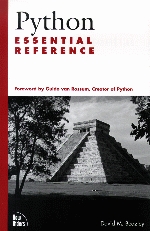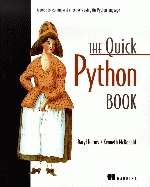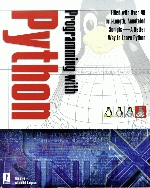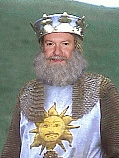Three books on Python


Authors: Daryl Harms and Kenneth McDonald
Publisher: Manning
ISBN: 1-8847-7774-0
Price: $39.95 US

Authors: Tim Altom with Mitch Chapman
Publisher: Prima Tech
ISBN: 0-7615-2334-0
Price: $39.99 US
Reviewer: Phil Hughes
Here we have three very different books. All were released in late 1999, doubling the number of available titles on Python.
Let me show my prejudices right away. Guido van Rossum wrote the forward to Python Essential Reference. This immediately made me expect more from this title, and I feel it delivered more.
Its intended audience is experienced programmers. While the first chapter is called “A Tutorial Introduction”, it is less than 11 pages long and would be of little use to a newcomer to programming. If, however, you are new to Python but not to programming, the chapter is a good introduction.
The next chapter, only four pages long, introduces you to the Lexical Conventions and Syntax of Python. While this sounds extremely short, Python has a very simple syntax and the chapter does cover the material.
The book continues in this local fashion with Chapter 3 discussing Types and Objects, Chapter 4 Operators and Expressions and, in Chapter 5, Control Flow. All this material is covered in the first 53 pages of the book. Being an experienced programmer, I found the coverage adequate and I didn't get bored or bogged down.
We continue the fast pace with Chapters 6 through 9 on Functions, Object, Modules and Classes. The final two chapters cover I/O and the execution environment. While these are the last sections labeled “chapters”, we are still only on page 86. Next comes all the reference information. Labeled A and B, the first is titled “The Python Library” and the second “Extending and Embedding Python”. The section on the library goes from pages 87 through 245 and does what you would expect for a library reference.
As with C, much of the power is in the library rather than in the language itself, and section A does an excellent job of covering the material. It is logically divided (Built-in Functions and Exceptions, Python Services, Mathematics, String Handling and so forth) and then the functions are listed alphabetically within each division.
Each division starts with introductory information. For example, Threads starts with Thread Basics and Python Threads before introducing the available functions. Examples are included where necessary to clarify the function use.
The final section, Extending and Embedding Python, is divided up much like the previous section. Examples include Enabling Optional Modules, Converting Data from Python to C and Error Handling. Sprinkled with the needed tables and code examples, coverage seems very complete.
I would highly recommend this book as a reference for any Python programmer, and a good place to start for an experienced programmer who is new to Python.
The Quick Python Book is a totally different animal. I don't mean that in a bad way—the intended audience is just much different. To give you the basic idea, on page 29 we see the start of Chapter 4, the Quick Python overview. In the next chapter, we see the introduction of indentation and block structuring. Finally, by page 90 we see control flow statements introduced.
In those first 90 pages, the reader has been encouraged to type in code fragments at the Python prompt and see what happens. This gives very positive feedback, the kind a non-professional programmer will surely need as he is learning the language.
A lot of time was put into not just teaching a language but also showing how it interacts with the operating system and what one can do with it. For example, Chapter 25 is titled “HTML and Python”. The chapter is filled with web page examples, showing how to create the HTML from Python. For those very serious about the Web, there is even a chapter on using Zope.
Finally, the appendix is titled “The Quick Python reference”. It has much less detail the equivalent information in Python Essential Reference, but it does complement the tutorial information nicely.
This is another good book. I highly recommend it for the beginning and intermediate Python audience. It is the best book I have seen for getting beginners up to speed.
The third book, Programming with Python, is again very different. Rather than being a tutorial or a reference, it is a book of examples. The examples take the form of scripts that are either openly available or were donated to the book.
At first, I thought I would like the idea. After spending some time with the book, I decided I don't like it. After a few (or a few dozen) scripts followed by an explanation of how they work, I got bored. Some of the scripts are cute, and many offer reasonable examples, but I just don't see it as a good learning tool. After all, with the amount of open-source code out on the Internet, why buy a book that shows what someone else has selected as interesting?
My recommendation is that if you want to see a lot of Python code, go out to the python.org web site and start looking around. You are more likely to find what you want, and you can save $39.99 in the process.
Phil Hughes is the publisher of Linux Journal. He can be reached via e-mail at p hil@ssc.com.







